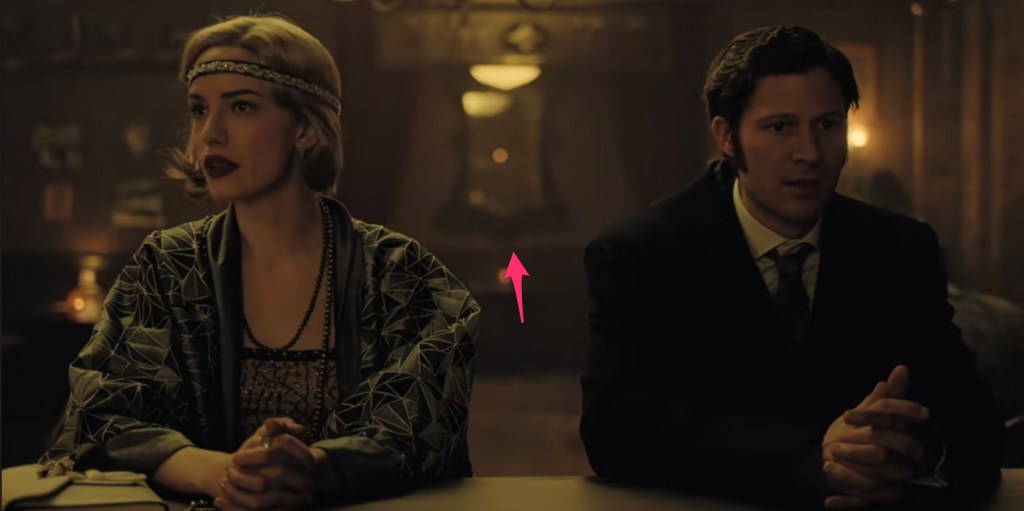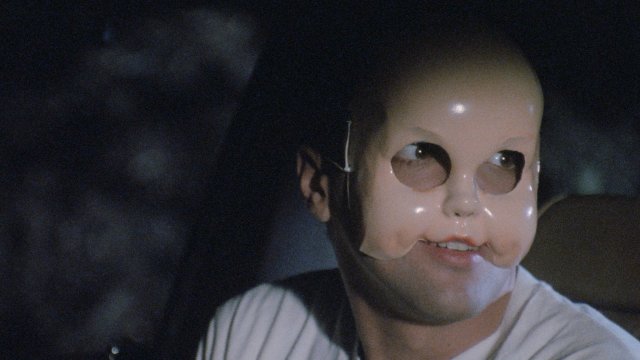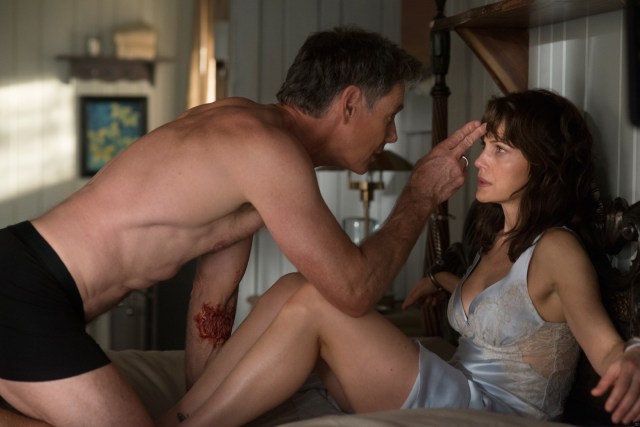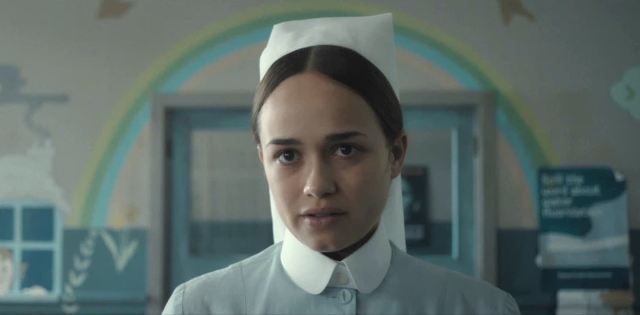For lovers of all things creepy, Mike Flanagan’s Edgar Allan Poe-inspired series, The Fall of the House of Usher, was a must-watch. If you’ve read Poe’s short stories or poems, you may have noticed a few details, like the ominous ravens and the cast members sharing names of famous Poe characters. However, one thing we know about Mike Flanagan is he is thorough when adding meaningful elements. The show is filled with so many symbolic moments, hidden details, and Easter eggs it can be challenging to spot them all.
There will be major spoilers, so don’t continue reading if you haven’t watched The Fall of the House of Usher yet.
All eight episodes are based on an Edgar Allan Poe story
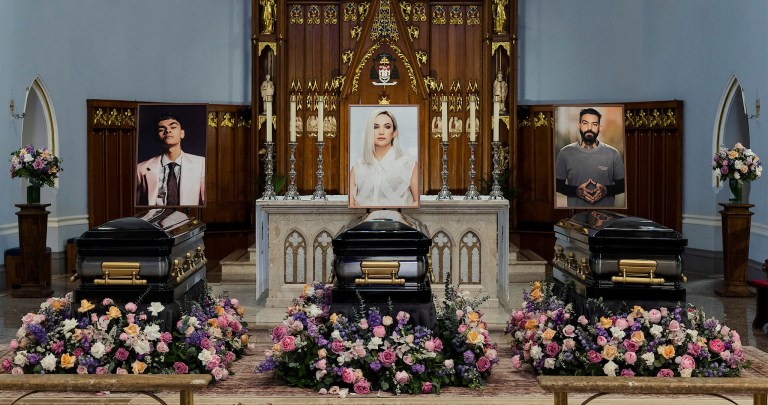
Watching The Fall of the House of Usher feels like an immersive experience into Edgar Allan Poe’s world. Not only is every episode based on a Poe story, but most of the titles are also the names of the tales themselves. Episode one, A Midnight Dreary, is the first line in his poem, The Raven, which just so happens to be the name of the final episode. You’ll also notice other notable mentions of Poe’s stories and poems throughout the show, most of which link to one of the Usher’s deaths.
All of the Usher children are named after a Poe character
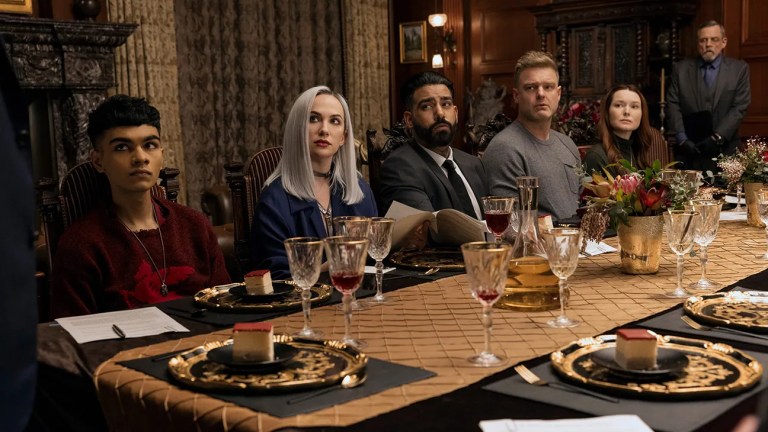
There are six descendants of Roderick Usher, all of whom were inspired by Poe characters. Frederick is the protagonist in the short story Metzengerstein: A Tale in Imitation of the German. Tamerlane is a nod to Usher’s first published work, Tamerlane and Other Poems. Although Victorine’s character inspiration comes from Poe’s story The Tell-Tale Heart, her name comes from his horror story The Premature Burial. Cat-hating Napoleon got the name from The Spectacles, based on the protagonist Napoleon Bonaparte Froissart. Camille is one of the few whose name is tied to the Poe story she’s based on. In The Murders in the Rue Morgue, Camille L’Espanaye was fittingly killed by an escaped orangutan. Last but not least, Prospero’s fate also closely mirrors the character his name is based on in The Masque of the Red Death. His nickname, Perry, is actually a tie to the author, who used the name Edgar Allan Perry when he enlisted in the Army.
The color symbolism
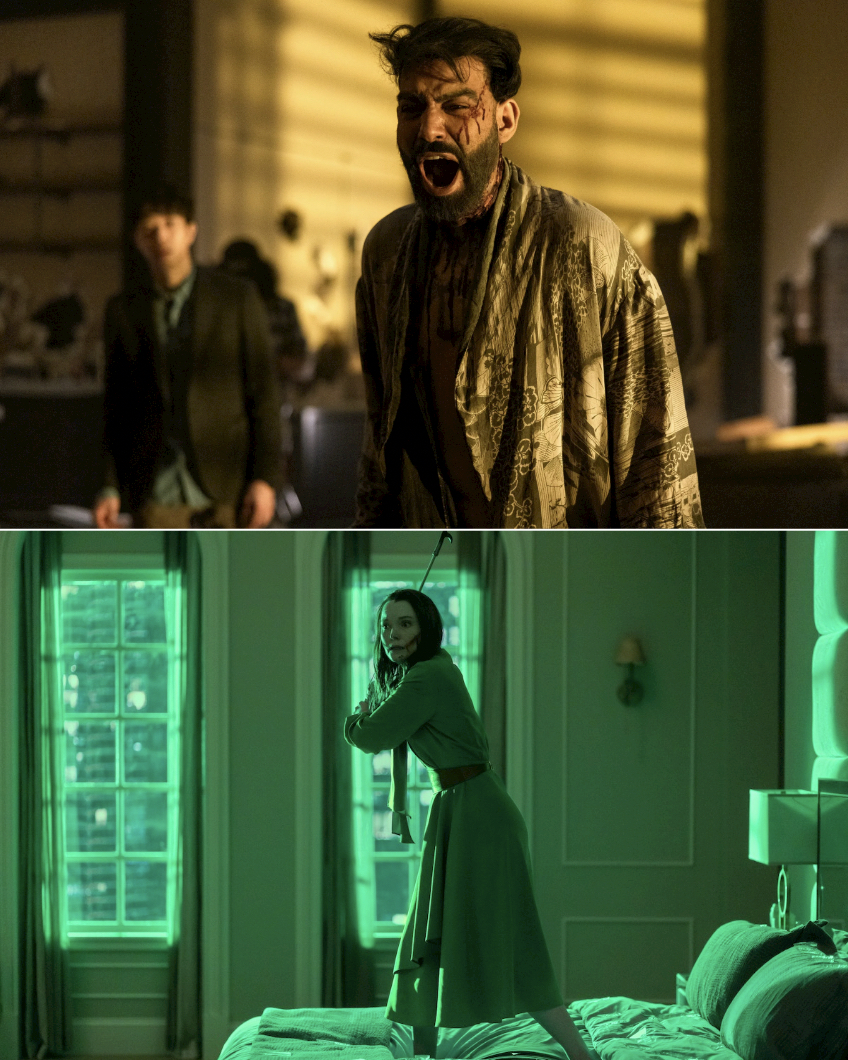
Color is a useful tool to evoke certain emotions, and Mike Flanagan included plenty of it. Each character is associated with a specific color, adding depth to their personas. Prospero Usher is red, Camille L’Espanaye is white, Napoleon Usher is yellow, Victorine Lafourcade is orange, Tamerlane Usher is green, Frederick Usher is blue, and Lenore Usher is black. It’s no surprise that Poe also used color symbolism in his short story, The Mask of the Read Death, which is a big part of what inspired the series. Poe’s story provides an in-depth description of a grand masquerade ball where guests avoid the Red Death plague. In the tale, each of the seven rooms is illuminated by particular colors to symbolize the stages of life.
Every character is related to a Poe story or poem
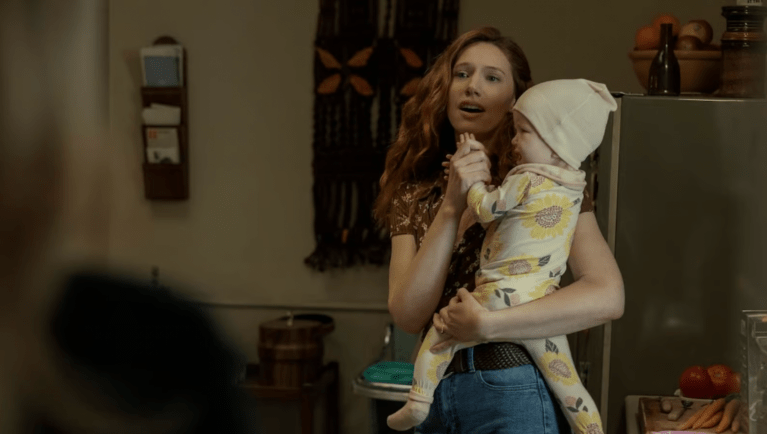
Not only are all the Usher children given names based on one of Poe’s works, but every character has a tie to the famous writer. For example, Roderick Usher’s first wife, Annabel Lee, is the name of a poem about his love for his partner who passed. Roderick recited this poem several times to her as if he wrote it himself.
The Ligadone drug is a reference to Poe’s ‘Ligeia’
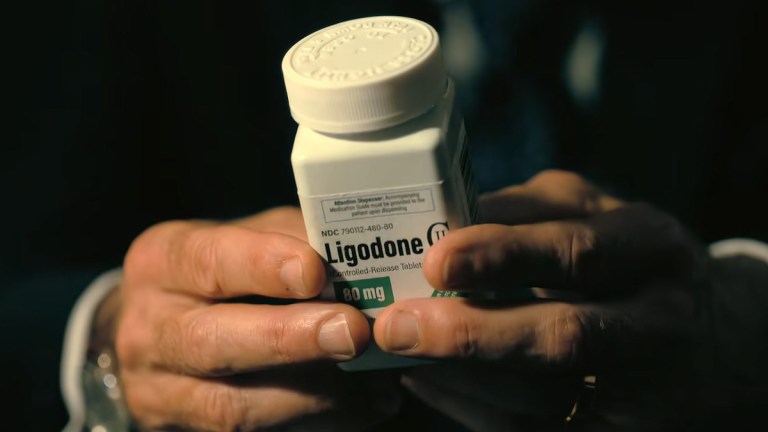
Ligadone is an opioid medication produced by Fortunato, which sounds a lot like Ligeia, one of Poe’s short stories. The story follows a beautiful and intelligent raven-haired woman who becomes ill and dies, but not before writing a poem about her mental state. After her passing, the narrator marries Lady Rowena, who also succumbs to her death after her illness. However, she comes back to life as Ligeia. The tale has themes of accepting mortality and touches on substance abuse. Considering Ligadone caused millions of deaths and opiod use disorders, the story is fitting.
Lenore and Morella’s movie options
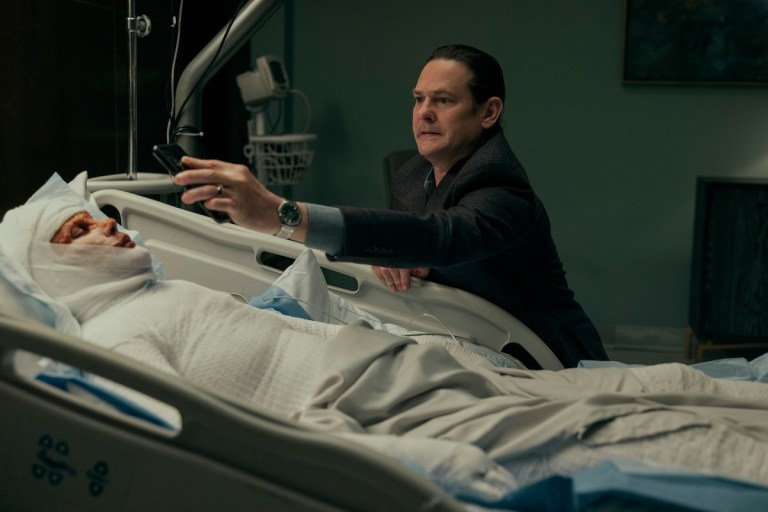
Flanagan manages to slide in two easter eggs in one short scene in episode six. Morella is lying at home in a hospital bed, recovering from severe burns, and is watching a movie with her daughter, Lenore. What are they watching? The final scene of Vincent Price’s 1961 film, The Pit and the Pendulum. Not only is the film an adaptation of Poe’s short story of the same name, but foreshadows Freddie’s fate. Next, the pair choose to watch another movie. Among the options streaming on Netflix is Gerald’s Game, one of Mike Flanagan’s famous horror films.
Fortunato Pharmaceuticals

Fortunato Pharmaceuticals is the family company and a central plot of The Fall of the House of Usher. The opioid drug business is a reference to one of Poe’s short stories, getting its name from a victim in The Cask of Amontillado. Fittingly, the pharmaceutical company finally gets taken down similar to the tale’s character.
The expensive cognac
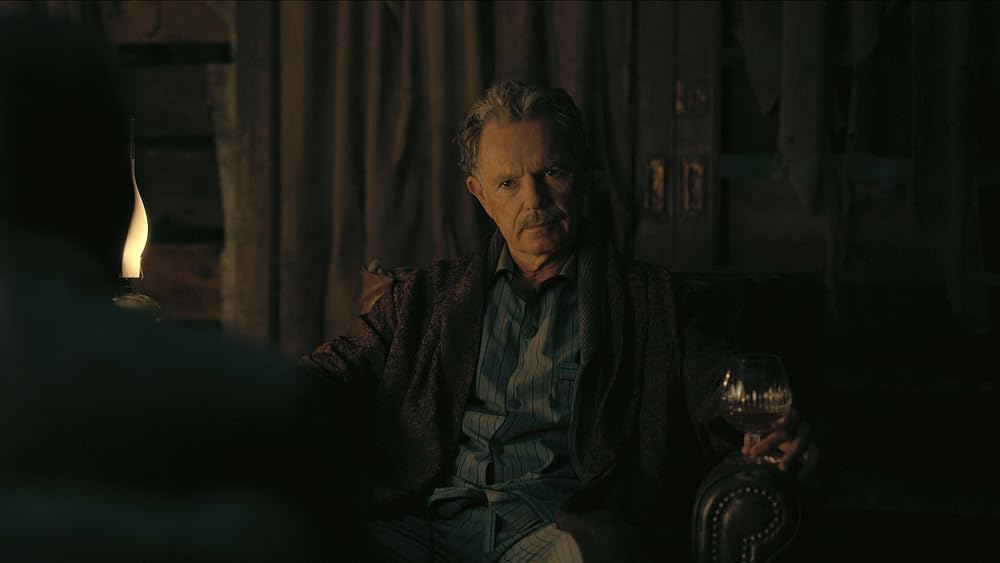
Roderick Usher is seen knocking back a few glasses of Henri IV Dudognon Heritage Cognac Grand Champagne, an exceedingly expensive booze. This million-dollar alcoholic beverage has a few connections to Poe, with the first being tied to The Cask of Amontillado.
However, this could also be a reference to a man known as “The Poe Toaster.” The legend says a masked man would leave a bottle of cognac and a set of three red roses on Edgar Allan Poe’s grave for his birthday every year. While many witnessed the mysterious figure, nobody knew his identity or why he/they kept up with this ritual for 100 years.
“Damn it, Toby!”
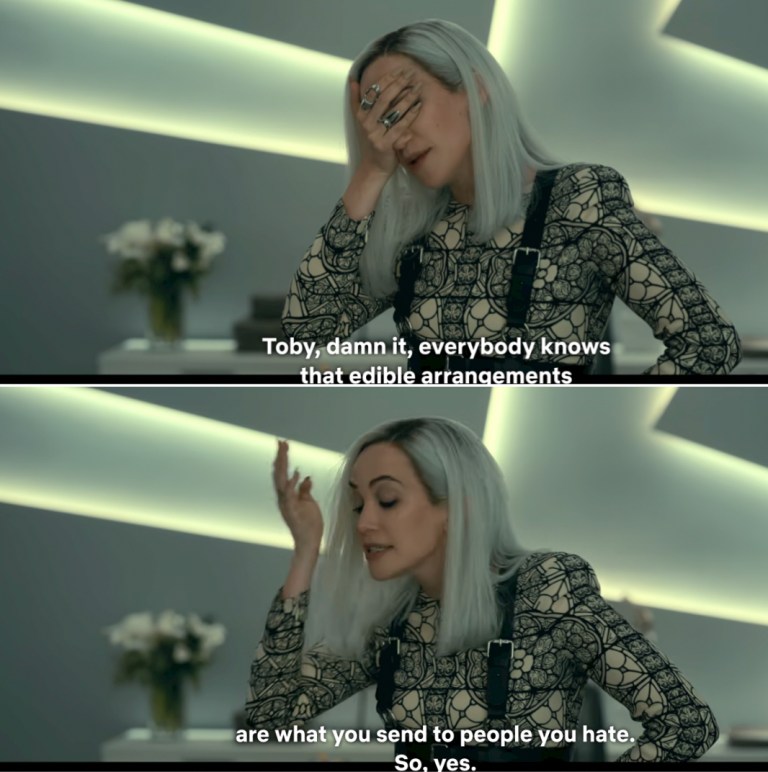
You may have noticed Camille repeatedly saying something along the lines of, “Damn it, Toby!” to her assistant. Although this may seem like a meaningless phrase, it stems from a character named none other than Toby Damnit from Poe’s short story Never Bet the Devil Your Head. The narrator views Toby as a nuisance, which is an appropriate depiction of Camille’s relationship with Toby.
Roderick’s feud with Rufus Griswold
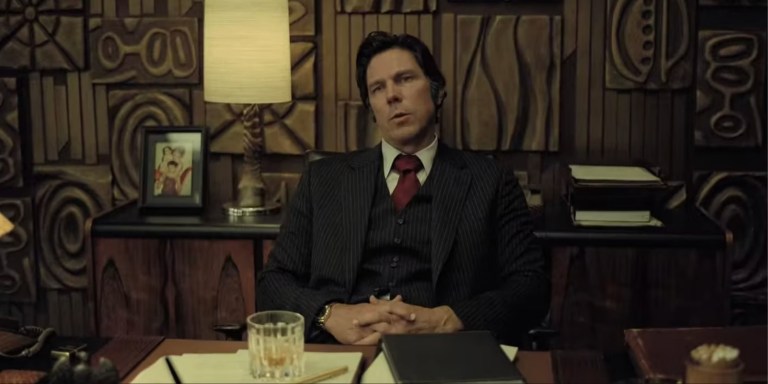
Throughout the miniseries, young Roderick has several disagreements with his boss Rufus Griswold. Their feud coincides with a similar rivalry between Edgar Allan Poe and a man named Rufus Griswold. The real Rufus Griswold worked alongside Poe. However, their relationship soured when Griswold featured an author Poe accused of plagiarism. Eventually, Griswold took Poe’s job, earning more than him and having more editorial control than Poe did. Griswold continued his revenge even after Poe’s death, depicting him as a reckless drunk in Memoir of the Author.
Verna’s Poe-themed bar

Verna’s unnamed bar is where everything changes for Roderick and Madeline Usher. The place that “exists beyond time and space” is a visual representation of Poe’s greatest works. Some of the decor includes a raven resting on a skull next to a crescent moon from The Raven, a black cat from The Black Cat, and a ship in a bottle from MS. Found in a Bottle. The stained glass in the back features a horse, referring to Metzengerstein: A Tale in Imitation of the German. If you look closely, you’ll even see a small framed picture of Edgar Allan Poe just above the bar.
Mummifying Madeline

As the show comes to a close, Roderick drugs and mummifies his sister, Madeline. In one of Poe’s obscure and satirical short stories, Some Words with a Mummy, the narrator tells the tale of a mummy to be examined. While this is one of the smaller Poe-themed Easter eggs, it goes to show how detailed Mike Flanagan is.
The Murders in the Rue Morgue
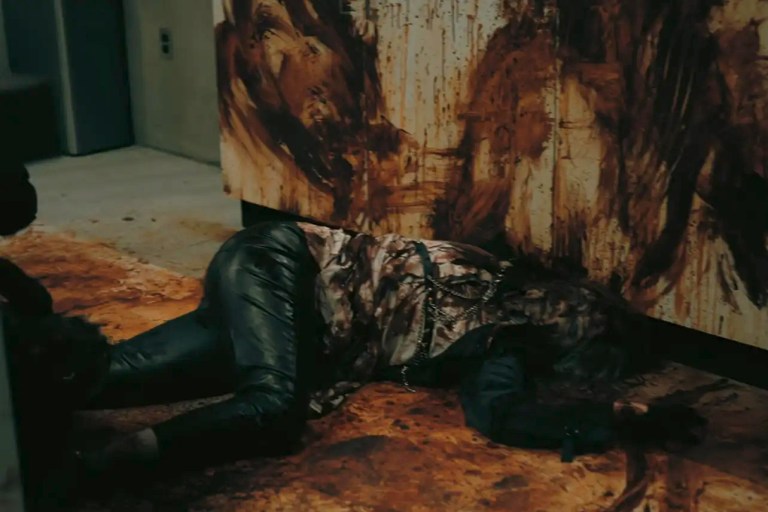
Vic’s lab, also known as Roderick Usher Experimental is a testing facility owned by Roderick Usher. As controversies arise, Fortunado shortens the name to its acronym, R.U.E., so it won’t be negatively associated with the opiod empire. Camille explains how the family once referred to it as the “R.U.E. Zoo.” Once they learned what really happened to the chimpanzees, they called it the “R.U.E. Morgue.” The name comes from Poe’s The Murders in Rue Morgue, which as we know features a character, Camille, being murdered by a primate.
Vic’s pendulum decor
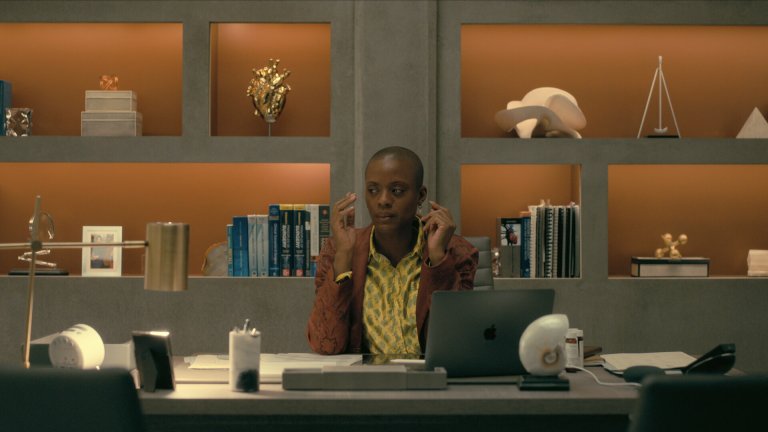
Vic’s office in the R.U.E. morgue has several elegant-looking decorations behind her desk. However, one piece in particular sticks out – a pendulum. Not only does this refer to Edgar Allan Poe’s story The Pit and The Pendulum, but it is another moment that foreshadows the death of her brother, Fredrick.
Another brick in the wall
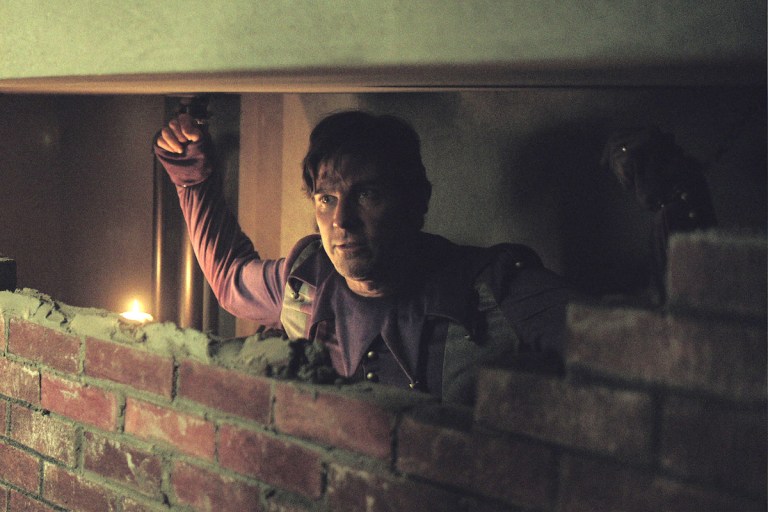
The miniseries begins with Pink Floyds’ Another Brick in the Wall, which initially seems insignificant. However, if we know anything about Flanagan, nothing he does is by accident. At the end of the series, Roderick and Madeline kill Rufus Griswold by chaining him up and adding “another brick in the wall,” and then a few more. Ultimately, the duo seal him behind the wall brick by brick so they can take over the company. Their method of killing Griswold is a reference to The Cask of Amontillado. In this Poe story, Fortunato is lured into catacombs and entombed alive using, you guessed it, bricks.
Verna’s driver’s license

Verna disguises herself when visiting the Usher descendants before their deaths. In episode three, Murder in the Rue Morgue, she takes on the identity of Pamela Clemm, a woman with heart issues. Her name is a nod to Edgar Allan Poe’s wife, Virginia, whose maiden name was Clemm. On the lisence, her address is listed as 1849 Reynolds Street, which alludes to Poe’s death. Not only did he pass away in 1849, but legend says he cried out the name, “Reynolds!” before passing.
The experimental mesh heart design
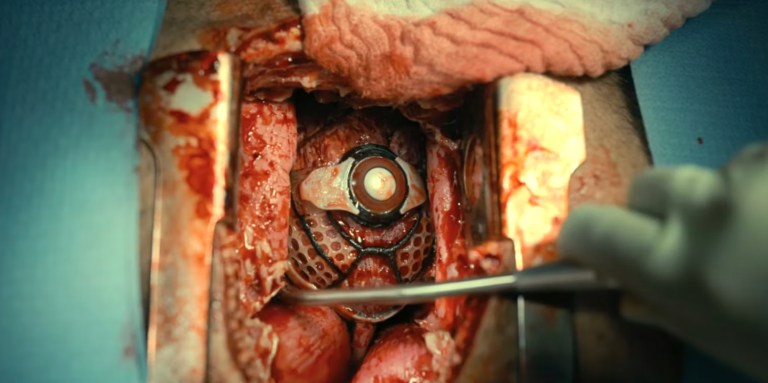
The mesh heart’s design was created to fit around the patient’s heart with a circular button on the front and several smaller circles layered on top of one another. Altogether, it takes the shape of an eye. This detail is attributed to Poe’s The Tell-Tale Heart, a short story featuring a vulture eye that drives the narrator mad, causing him to murder the old man. Similarly, Vic is haunted by guilt every time she looks at the device in her office. The sound of the heartbeat drives her insane, leading her to murder her girlfriend, Alessandra.
The hidden ghost
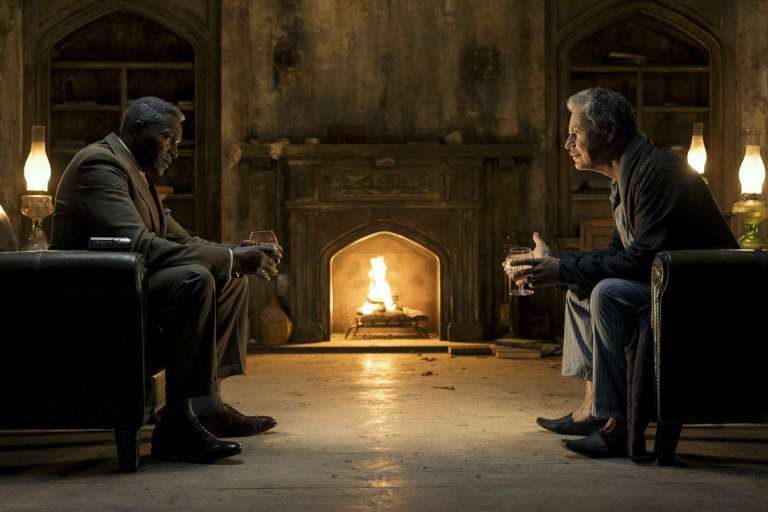
If you thought The Haunting of Hill House was the only Mike Flanagan series to feature hidden ghosts, you may have missed the presence in The Fall of the House of Usher. In episode one, Roderick tells Dupin that his mother is behind him. Although he refuses to turn, we get a glimpse of a ghost shifting behind his back in the distance.
The ‘Hush’ mask
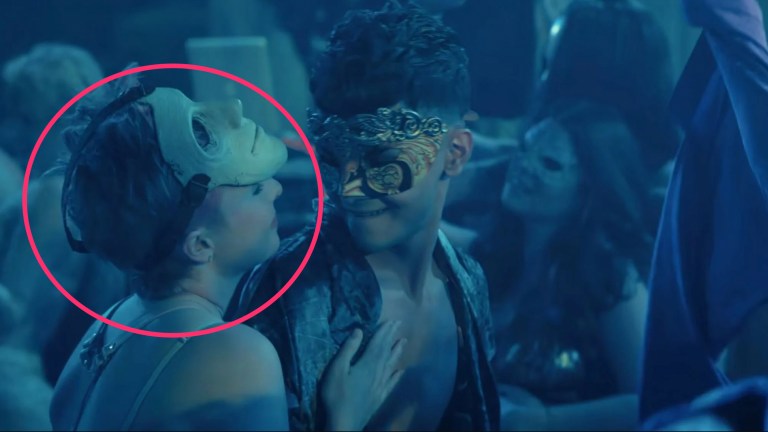
In episode two, The Masque of the Red Death, Prospero Usher throws an exclusive masquerade orgy. With so many masks, you may have missed the special disguise. In Flanagan’s movie, Hush, a masked stranger stalks and plays a cat-and-mouse game to torture the deaf homeowner. The mask makes its return in The Fall of the House of Usher, worn by Prospero’s girlfriend, Jenny. Perhaps this foreshadowed the danger that came shortly after.
The Lasser Glass
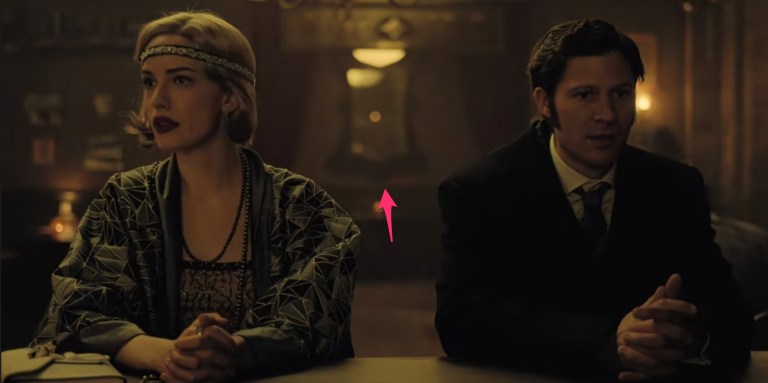
The Lasser Glass is one of the most well-known props in the Flanaverse, appearing in every Flanagan movie and series. In Oculus, “The Lasser Glass” is an antique mirror that hypnotizes anyone who peers into it, making them homicidal or suicidal. You see the famous looking glass in episode one of The Fall of the House of Usher at the bar in the background behind Roderick and Madeline. It seems this is a hint to the deaths that follow once the siblings agree to Verna’s deal.
Further reading:
